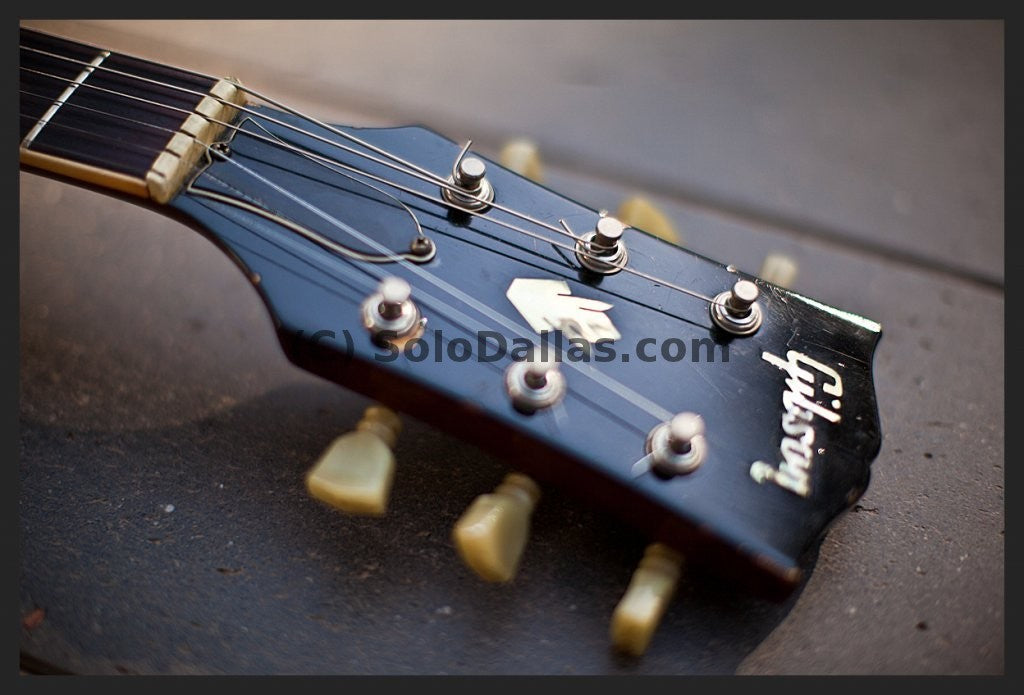Many claim – including me, previously, being fooled into it – that their vintage Gibson SG is a 1968 Standard.
They’ve been told so by their vendor or have made their own research. That’s what i had done as well, failing (yes: FAIL!).
True Gibson 1968 SGs have a particular feature – maybe two or three – that are only found in 1968 and a bit earlier, definitely 1967.
Is there something special about the year 1968? No. For SGs, it was a good year, seemingly, and that’s all.
Much of the “myth” (if any) running around year 1968 (for SGs!) is probably related to Angus Young and Gibson itself.
Gibson in fact claimed that first Angus’ Gibson Guitar was a 1968 (see here for an in depth analysis).
It wasn’t. It was a 1970/1971.
So why stir the water around it so much? Probably, just because 1968 is considered the last year of collectible, good production for Gibson guitars. It’s main a collector thing, a vintage elite that tends towards this fact (George Gruhn, well known vintage expert, claimed it so himself several years ago).
I could check personally that great guitars are not related to their year of production, and I have said so already several times.
Still, even for me, there was something special about year 1968. Probably because I was born in 1968, probably because it was thought that Angus’ first SG (and most preferred, that’s why) was dated back in 1968, I got curious about it.
So when chance came, I bought one mystical 1968 Gibson SG Standard.
This guitar (see images below) has had a number of modifications over the years.
The two most striking are the lack of the vibrola and its color (body only), black.
The moment I have seen it – on ebay – I liked it. But with all the modifications that were done to it, I offered a lot less than what was asked for it and finally, after a month of offers and counteroffers, I got it at 3k USD.
Not cheap. But not much at all, considering what good condition 1968 SG standards fetch. When you find one that truly is a 1968.
So, let’s look at the defining elements for a 1968 SG Standard:
– deeper cutaway carvings
– peculiar neck joint
– logo positioning
– Gibson logo font
As you see, I am not even mentioning the serial numnber. Gibson serial numbers of that era are completely unreliable.
Many times, experts go and check the potentiometer writings and codes, that have a specific code by which the production year (of the potentiometer alone) is identified.
Even then, I was led into error as I do have a 1969 Gibson SG standard – sold to me as a 1968 – that I later found out was in fact a 1969 and not a 1968 by means of the neck joint.
The potentiometer codes on the 1969 are though referring to 1968. This was simply because many potentiometers were bought by Gibson at given times and then, stored even for years to come.
So, when you are checking the approximate date of production of your vintage Gibson SG, never trust the serial number alone, but do a cross check with all the features mentioned above.
So this is how I got the guitar, more or less (the switch tip was non original and the switch ring was black: replaced those two immediately with a non original white switch ring – a la Angus – and a correct, original white switch tip:
And this is what it looks like now (changed the bridge with an original one, with the nylon saddles: these nylon saddles DO change the guitar tone AND playability. I now tend to opt for nylon saddles as they seem to soften the bends and dim the string strikes. I also added a non original pickup cover in the bridge position and I plan on changing both of them with an original set. The neck position pickup cover is also non original while both pickups are original, Patent Number/T tops of that era):
So, we mentioned the “peculiar” neck joint of 1967/1968: here you are:
Here an example of a typical, very common 1969 neck joint. completely different (note that also, 64/66 neck joints are different, and so are 1970/1971 SG neck joints. It’s confusing at first, but an incredible giveaway to date a vintage SG).
 Neck joint of a 1969 Gibson SG Standard
Neck joint of a 1969 Gibson SG Standard
Despite the black color, I tried to shoot a few pictures that might show the deeper (deeper than later years) cutaway carvings:
(I’ll soon provide comparison images and will review ALL of my guitars with tons of details).
Also note how the stopbar was placed (incorrectly) once the vibrola was removed. It is way back. This was probably due to the fact that the person who modified the guitar at the time, didn’t want to drill other holes into the body and chose to use the existing (Maestro) vibrola holes instead.
The headstock decorations are also different. The logo in the center of the headstock is shorter and fatter, while the Gibson font is older looking and sports the famous “dot” on the “i” (as opposed to 1969 that lacked the dot and had a rougher font).
Note of the author for the more ‘particular’ reader: these articles on SoloDallas’ gear are not intended to be egotistical, neither am I intending to show off. They are for passion, documentation/information and sharing pleasure with those who have a similar interest. Thanks for your trust and understanding, SD








